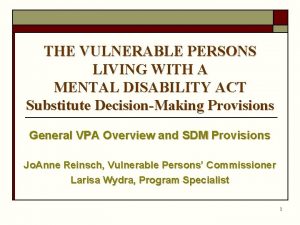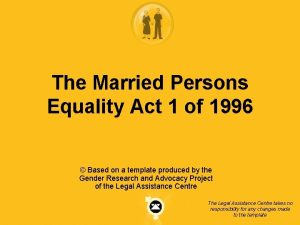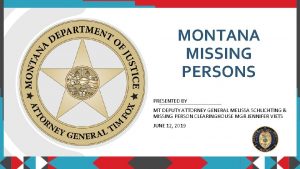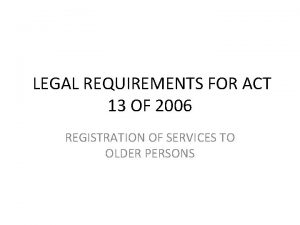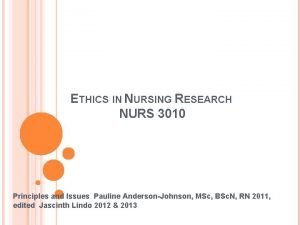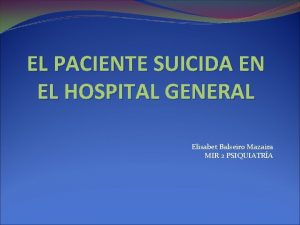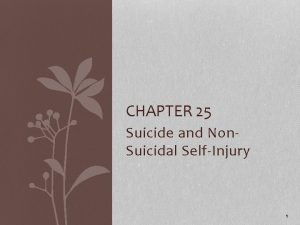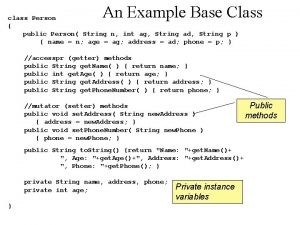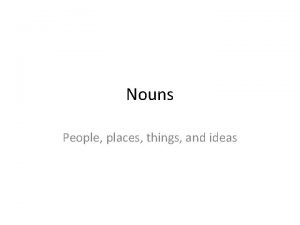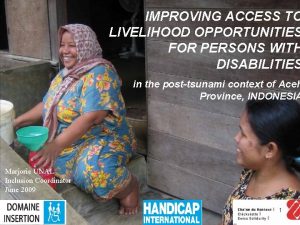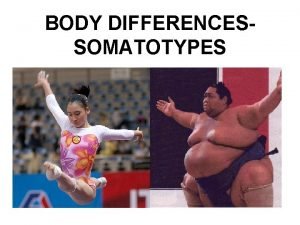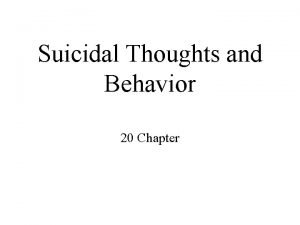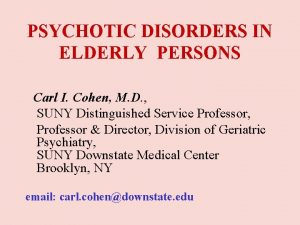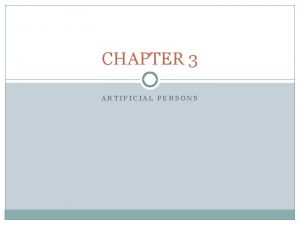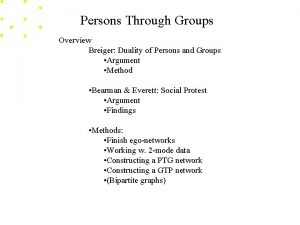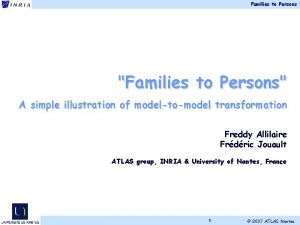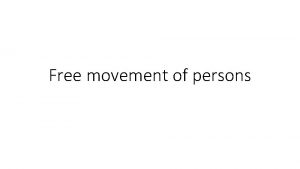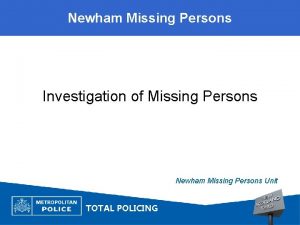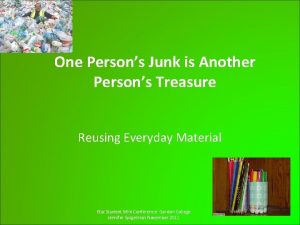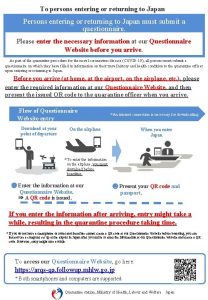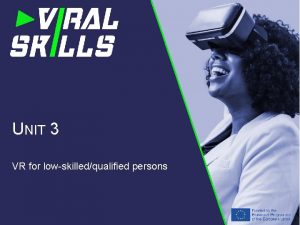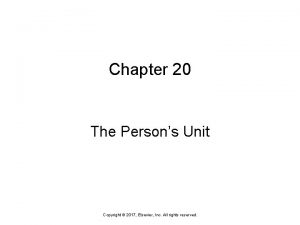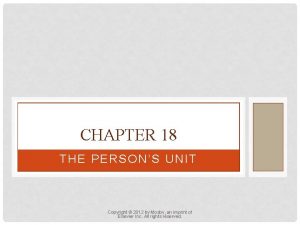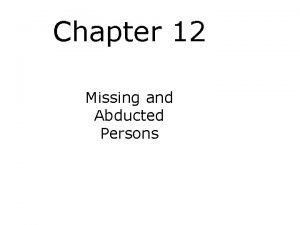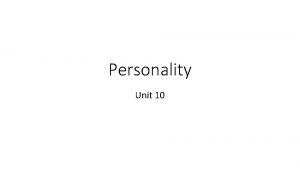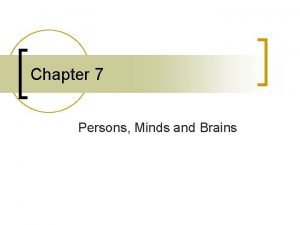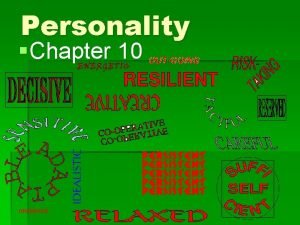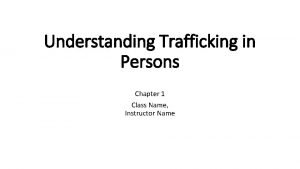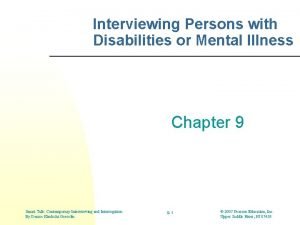Chapter 18 THE PERSONS UNIT The Persons Unit



























- Slides: 27

Chapter 18 THE PERSON’S UNIT

The Person’s Unit The person’s unit is the personal space, furniture, and equipment provided for the person by the agency. The person’s unit is a private area. Patient and resident rooms are designed to provide comfort, safety, and privacy.

Comfort Temperature and ventilation ◦ Most healthy people are comfortable when the temperature is 68 F to 74 F. ◦ Older and ill persons may need higher temperatures. ◦ Protect infants, older persons, and those who are ill from drafts. ◦ Have them wear the correct clothing. ◦ Have them wear enough clothing. ◦ Offer lap robes to those in chairs and wheelchairs. ◦ Provide enough blankets for warmth. ◦ Cover them with bath blankets when giving care. ◦ Move them from drafty areas.

Comfort (cont’d) Odors occur in health care settings and in home care. ◦ Bowel movements, urine, draining wounds, and vomitus have embarrassing odors. ◦ Body, breath, and smoking odors may offend others. ◦ Smoke odors present special problems. ◦ Residents, visitors, and staff smoke only in the areas allowed. ◦ If you smoke, follow the agency’s policy. Practice hand washing after handling smoking materials and before giving care. ◦ If you smoke, give careful attention to your uniforms, hair, and breath. ◦ Good nursing care, ventilation, and housekeeping practices help prevent odors.

Noise According to the CMS, a “comfortable” sound level: ◦ Does not interfere with a person’s hearing ◦ Promotes privacy when privacy is desired ◦ Allows the person to take part in social activities

Noise (cont’d) Common health care sounds may disturb some patients and residents. Loud talking and laughter in hallways and at the nurses’ station are common. People want to know the cause and meaning of new sounds. Health care agencies are designed to reduce noise. Window coverings, carpets, and acoustical tiles absorb noise. To decrease noise: Control your voice. Handle equipment carefully. Keep equipment in good working order. Answer phones, signal lights, and intercoms promptly.

Lighting According to the CMS, comfortable lighting: Lessens glares Lets the person control the intensity, location, and direction of light Lets visually impaired persons maintain or increase independent functioning Good lighting is needed for safety and comfort. Adjust lighting to meet the person’s changing needs. Always keep light controls within the person’s reach. This protects the right to personal choice.

Room Furniture and Equipment Rooms are furnished and equipped to meet basic needs. ◦ The right to privacy is considered. Beds ◦ Beds have electrical or manual controls. ◦ Beds are raised horizontally to give care. ◦ The lowest horizontal position allows the person to get out of bed with ease. ◦ The head of the bed is flat or is raised to varying degrees.

Room Furniture and Equipment (cont’d) Electric beds Manual beds have cranks at the foot of the bed. Controls are on a side panel, bed rail, or the foot board. Patients and residents are taught to use controls safely. The cranks are up for use and kept down at all other times. The six basic bed positions are: Flat Fowler’s position High-Fowler’s position Semi-Fowler’s position Trendelenburg’s position Reverse Trendelenburg’s position

Fowler’s Position

High-Fowler’s Position

Semi-Fowler’s Position

Trendelenburg’s Position (Head Down, Feet Up)

Reverse Trendelenburg’s Position (Head Up, Feet Down)

Room Furniture and Equipment (cont’d) ◦ ◦ ◦ Bed safety involves the hospital bed system. The FDA defines the hospital bed system as the bed frame and its parts. ◦ The mattress ◦ Bed rails ◦ Head- and foot-boards ◦ Bed attachments The person can get caught, trapped, or entangled in spaces created by: ◦ Bed rails ◦ The mattress ◦ The bed frame ◦ The headboard or footboard

Room Furniture and Equipment (cont’d) Ø Serious injuries and deaths have occurred from head, neck, and chest entrapment. Arm and leg entrapment also can occur. Ø Persons at greatest risk: Are older Are frail Are confused or disoriented Are restless Have uncontrolled body movements Have poor muscle control Are small in size Are restrained

Room Furniture and Equipment (cont’d) ◦ Hospital bed systems have 7 entrapment zones. ◦ Zone 1: Within the bed rail ◦ Zone 2: Between the top of the compressed mattress and the bottom of the bed rail and between the rail supports ◦ Zone 3: Between the bed rail and the mattress ◦ Zone 4: Between the top of the compressed mattress and the bottom of the bed rail and at the end of the bed rail ◦ Zone 5: Between the split bed rails ◦ Zone 6: Between the end of the bed rail and the side edge of the headboard or footboard ◦ Zone 7: Between the headboard or footboard and the end of the mattress

Zone 1 Zone 2

Zone 3 Zone 4

Zone 5 Zone 6

Zone 7

Room Furniture and Equipment (cont’d) The overbed table is moved over the bed by sliding the base under the bed. It is raised or lowered for the person in bed or in a chair. It is used for meals, writing, reading, and other activities. The nursing team uses the overbed table as a work area. Place only clean and sterile items on the table. The bedside stand is next to the bed. It is used to store personal items and personal care equipment. Place only clean and sterile items on top of it.

Room Furniture and Equipment (cont’d) The person’s unit has a chair for personal and visitor use. The chair must be comfortable and sturdy. It must not move or tip during transfers. It must not be too low or too soft. The person’s unit has a privacy curtain that extends around the bed. Always pull the curtain completely around the bed before giving care. Privacy curtains do not block sound or voices.

Room Furniture and Equipment (cont’d) Personal care items are used for hygiene and elimination. The agency provides: Bedpan and urinal Wash basin, kidney basin, water pitcher and cup, and soap and a soap dish Some persons bring their own personal care products.

Room Furniture and Equipment (cont’d) The call system lets the person signal for help. When using an intercom system, remember confidentiality. Persons with limited hand mobility may need a signal light that is turned on by tapping it with a hand or fist. Some people cannot use signal lights. Check the care plan for special communication measures. Check these persons often. You must: Keep the signal light within the person’s reach. Place the signal light on the person’s strong side. Remind the person to signal when help is needed. Answer signal lights promptly. Answer bathroom and shower or tub room signal lights at once.

Room Furniture and Equipment (cont’d) Bathroom ◦ ◦ ◦ A toilet, sink, call system, and mirror are standard equipment. Grab bars are by the toilet for safety. Some bathrooms have higher toilets or raised toilet seats. Towel racks, toilet paper, soap, paper towel dispenser, and a wastebasket are placed within easy reach of the person. Bathrooms have signal lights. They are usually next to the toilet. ◦ ◦ The sound at the nurses’ station is different from signal lights in rooms. Someone must respond at once when a person needs help in a bathroom.

Room Furniture and Equipment (cont’d) Closet and drawer space ◦ OBRA and the CMS require that nursing centers provide each person with closet space. ◦ The closet space must have ◦ ◦ shelves and a clothes rack. The person must have free access to the closet and its contents. Items in closets and drawers are the person’s private property. ◦ You must have the person’s permission to open or search closets or drawers. The person’s unit must be kept clean, neat, safe, and comfortable.
 A person's trash is another person's treasure
A person's trash is another person's treasure Liable to vat
Liable to vat The vulnerable persons living with a mental disability act
The vulnerable persons living with a mental disability act Married persons equality act 1 of 1996
Married persons equality act 1 of 1996 The principle of respect for persons
The principle of respect for persons Power of attorney for missing person
Power of attorney for missing person Older persons act norms and standards
Older persons act norms and standards Blessed trinity definition
Blessed trinity definition The principle of respect for persons
The principle of respect for persons The principle of respect for persons
The principle of respect for persons Anticonvulsivantes
Anticonvulsivantes Some common trafficking in persons contract violations
Some common trafficking in persons contract violations The sad persons scale
The sad persons scale Class of persons examples
Class of persons examples Personbunden fortæller
Personbunden fortæller Famous persons
Famous persons Dance of caring persons
Dance of caring persons This is a person's essential
This is a person's essential High close doji
High close doji The names of people, places, things, or ideas
The names of people, places, things, or ideas Net migration definition ap human geography
Net migration definition ap human geography Livelihood opportunities for persons with disabilities
Livelihood opportunities for persons with disabilities Persons in lpscs careers must effectively communicate with:
Persons in lpscs careers must effectively communicate with: Avenues of communication
Avenues of communication Mesomorph sports persons names
Mesomorph sports persons names Livelihood programs for persons with disabilities
Livelihood programs for persons with disabilities Sad persons scale nursing interventions
Sad persons scale nursing interventions Persons
Persons


